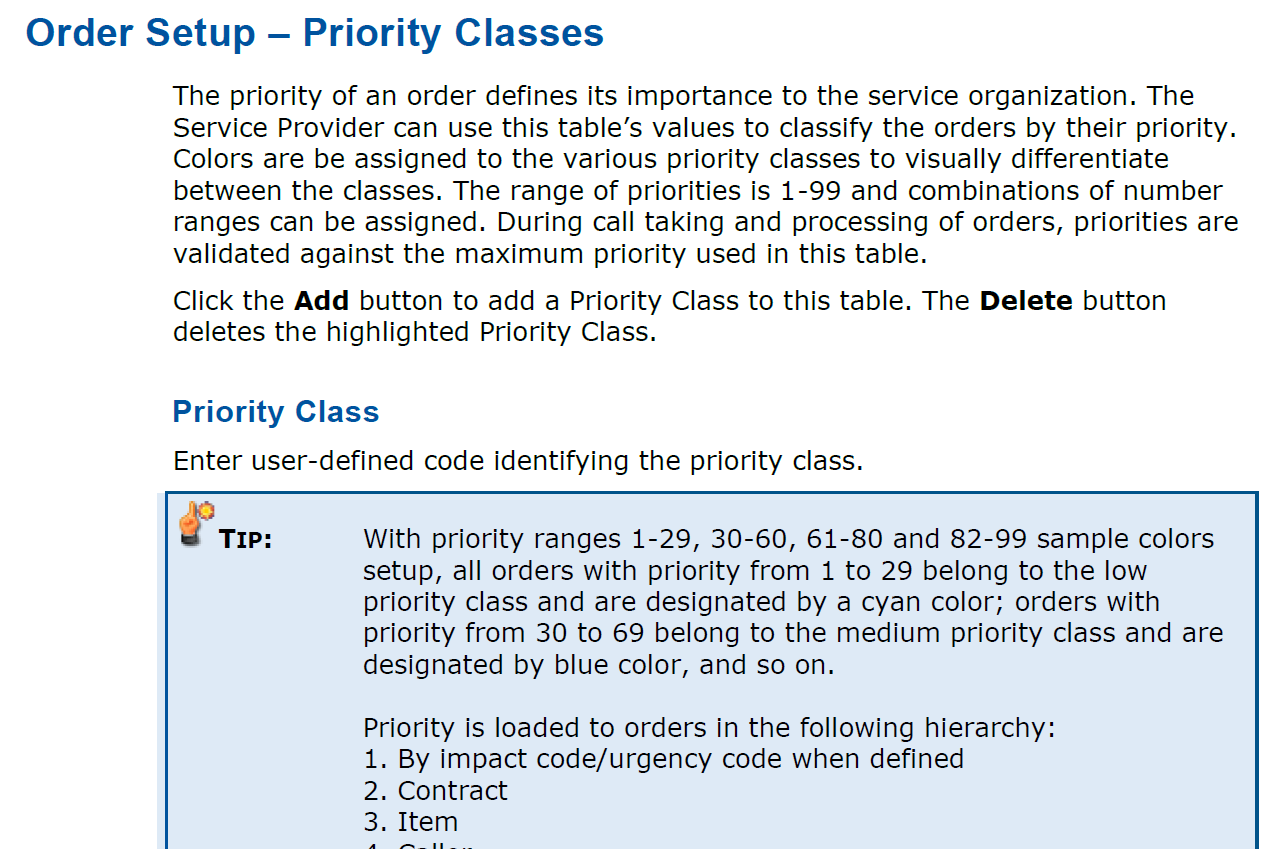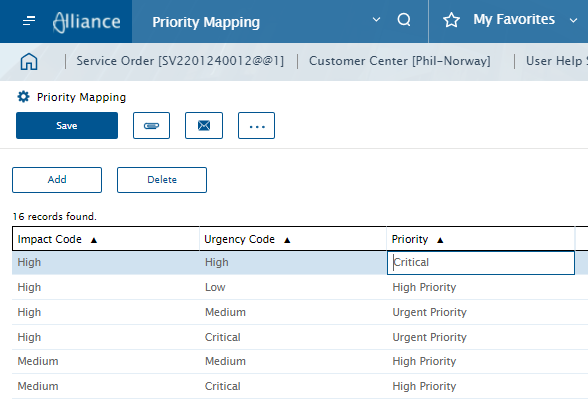We are working on a default template voor Service Order creation via API. We use priority based SLA's.. so I want the customer the be able to add the correct priority in the XML.
So we do not want to use <priority>51</priority>, but rather let the customer fill in the priority_class_id. It seems that this cannot be used when creating a Service Order via the API.
How can we incorporate this into the Service Order schema?
<?xml version="1.0"?>
<root
xmlns="http://astea.com.schema.bc.Service_Order"
xmlns:dt="urn:schemas-microsoft-com:datatypes">
<session email="" alias="">
<state bc_name="Service_Order">
<action name="data-NEW">
<main>
<row>
<cust_company_id/>
<site_company_id>example_company_1</site_company_id>
<cconth_id>example_contract_1</cconth_id>
<callt_id>SERVICE</callt_id>
<problem_desc>Your problem description here</problem_desc>
<priority>51</priority>
<refno>example_reference_1</refno>
<actgr_id>SCR-BE</actgr_id>
<call_source_id>MAIL</call_source_id>
<open_date>2022-01-24</open_date>
<open_time>14:00:00</open_time>
</row>
</main>
</action>
</state>
</session>
</root>



